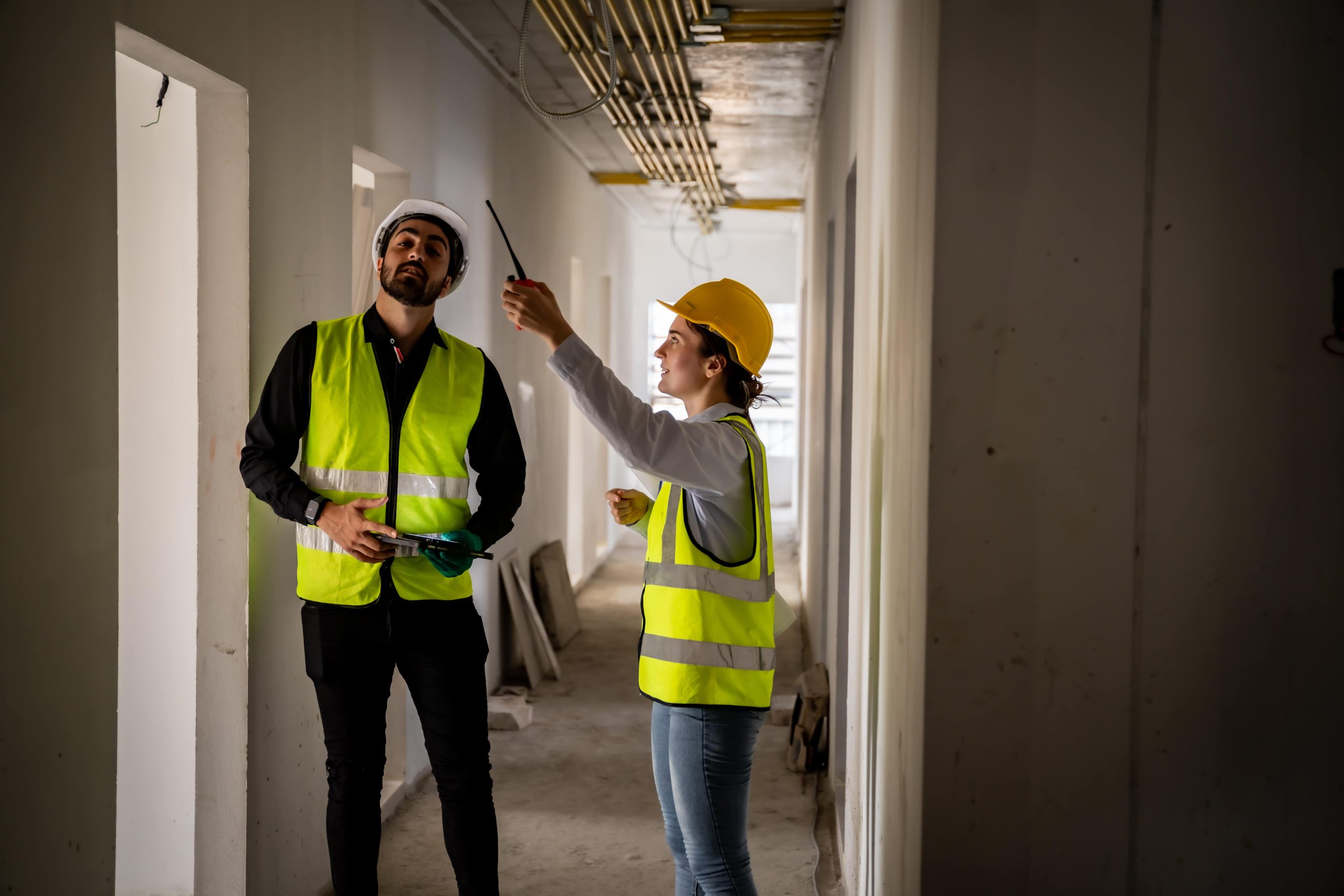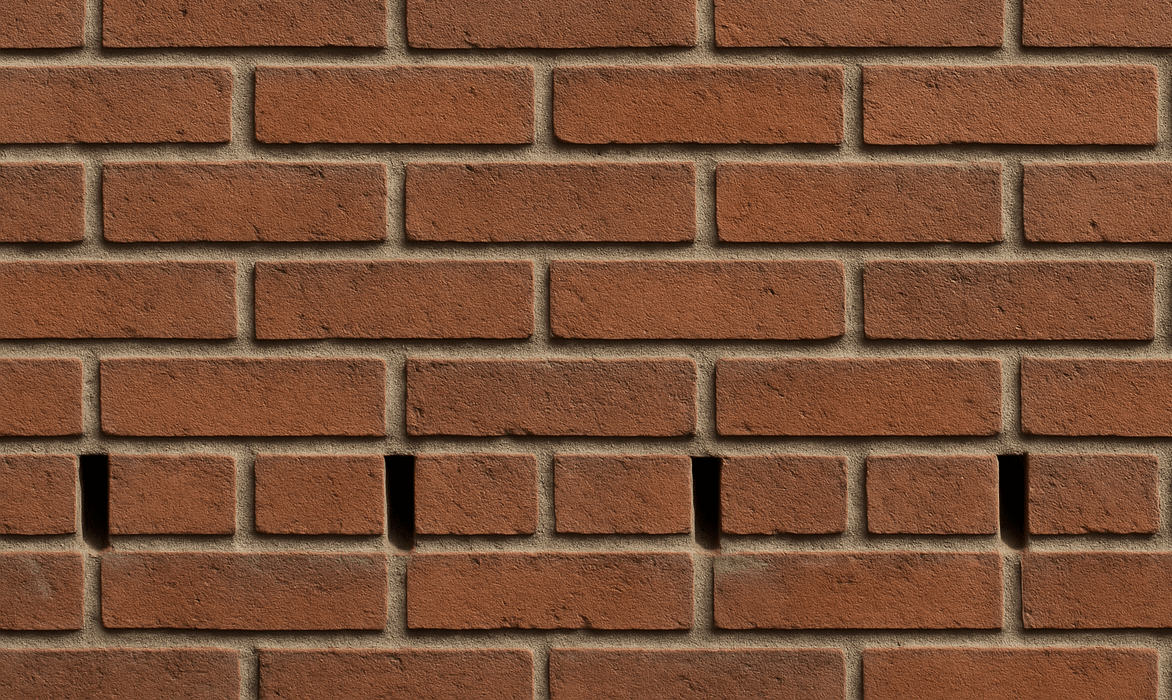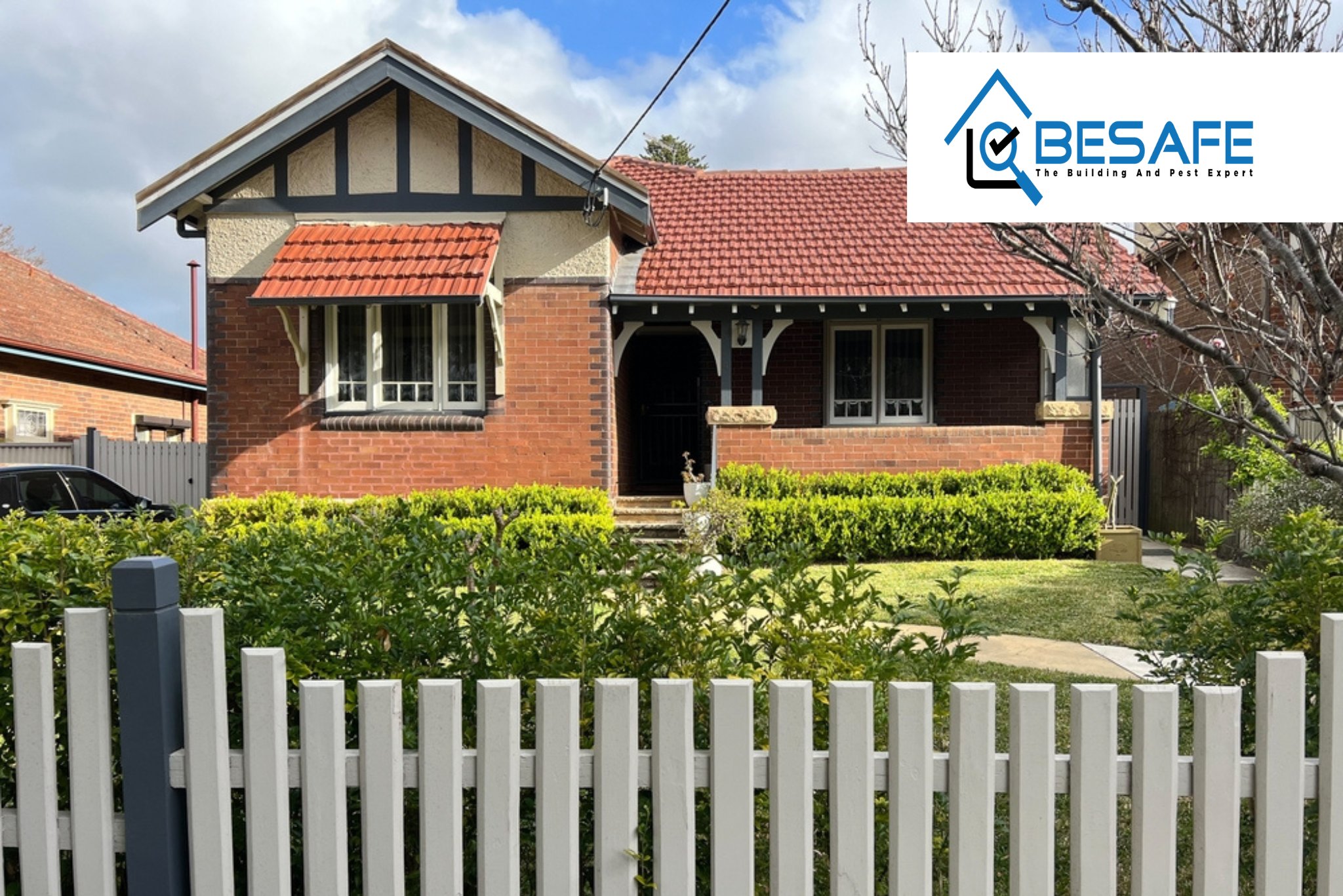
Pre-Purchase Building Inspection vs Pest Inspection: What You Need To Know
At BeSafe Property Inspections, we understand just how important it is to have a full and accurate snapshot of a property before committing to a purchase. As a team of licenced builders and inspectors, we have extensive experience in identifying potential risks and defects that are not always visible to the untrained eye.
So, when it comes to purchasing property in Australia, building and pest inspections are two essential steps. While these assessments often go hand in hand, they do differ in focus, scope and purpose. Where building inspections focus on assessing the structural and cosmetic condition of a property, pest inspections specifically target pests such as termites and other wood-destroying organisms that can cause serious damage over time.
In this post, we’ll explore the key differences between building and pest inspections, outline what each involves, and explain why both are critical to making an informed property purchase decision.
The Importance Of Property Inspections
According to research, housing prices have seen an almost 40% increase in the past 5 years. As we see property values rising, ensuring that you make a sound investment has never been more important. It’s already a significant investment without the risk of unforeseen issues.
Both building and pest inspections are designed to uncover any issues that are not always visible in a casual walkthrough. Not only do they affect the integrity of the property, but are also crucial in assessing the overall value of the home and determining whether it’s a sound investment worth pursuing.
- Financial Protection: First and foremost, knowing the full condition of a property can save a purchaser from costly repairs and unexpected expenses in the future. Early detection allows buyers to plan and budget accordingly or reconsider the purchase if necessary.
- Safety: Inspections assess potential safety hazards, including structural weaknesses or pest damage, which could put occupants at risk if left unaddressed.
- Value: Understanding the condition of the property helps ensure purchasers are paying a fair price and protects their investment over time.
- Negotiation Power: Armed with detailed inspection reports, buyers are in a stronger position to negotiate repairs, price reductions, or other concessions with the seller.

What is a Pre-Purchase Building Inspection?
A pre-purchase building inspection is a thorough evaluation conducted by qualified professionals to assess the overall condition of a property. The primary purpose is to provide potential buyers with a clear and comprehensive understanding of the property’s structural integrity and general state, helping buyers make a well-informed decision.
Our extensive experience shows that scheduling this inspection before signing a contract of sale is crucial, and doing so provides clarity and confidence about your purchase.
While professional inspection fees might seem like an upfront cost, they are minimal compared to the expenses associated with fixing major issues discovered after the purchase. Moreover, having a detailed inspection report strengthens your negotiating position, allowing buyers to request repairs or a price reduction, and even assists in creating an ongoing maintenance plan should you proceed with the purchase.
What Inspectors Look for in the Structure
At BeSafe, our licensed building inspectors conduct a comprehensive assessment of all accessible areas of the property, including:
- Interior: Walls, floors, ceilings, windows, doors, bathrooms, laundry areas, and stairs are all carefully examined for signs of damage, wear, or structural concerns.
- Exterior: Inspectors assess stairs, garages, external finishes, gutters, eaves, porches, decks, and weep holes, ensuring these are free from defects and adequately ventilated.
Professional inspectors also use specialised tools such as moisture meters and thermal imaging cameras to detect issues that are not visible to the naked eye, like hidden moisture or insulation problems.
Common Issues Found During Inspections
There are certain problems that are found more frequently than others. This is often due to factors such as the property’s age, the quality of original construction, environmental conditions like moisture and soil movement, as well as ongoing maintenance practices. Understanding these common issues can help buyers anticipate potential risks and make informed decisions during the purchasing process.
- Structural Defects: This includes cracks or movement in concrete slabs or foundations, which may indicate shifting or settling ground that requires immediate attention. Bowing, leaning, or sagging walls can threaten the building’s stability. Missing or damaged load-bearing beams and columns are critical issues that could jeopardise the entire structure’s safety.
- Framing and Flooring Problems: Proper framing and flooring are vital to a building’s strength. Issues here can result in uneven floors, compromised structural integrity, or, in extreme cases, partial collapse.
- Crumbling or Damaged Bricks and Walls: These may indicate moisture damage or general deterioration needing significant repair.
- Water and Moisture Damage: Signs of damaged roofs, gutters, and other water ingress points are common concerns that can lead to further structural decay if left unchecked.
It’s important to note that building inspection reports primarily focus on major structural defects rather than minor cosmetic or finish quality issues. Additionally, reports typically exclude inaccessible areas, swimming pools, home appliances, accessories, natural disaster risks, and detailed building code compliance assessments – these require separate, specialised inspections.

What is a Pest Inspection?
A pest inspection is a specialised assessment designed to detect the presence of unwanted pests or infestations that may compromise a property’s structural integrity, safety, and overall health. The Purpose of a pest inspection is to help identify active infestations, evidence of past pest activity, and conditions that could invite future problems.
During a pest inspection, qualified professionals conduct a thorough examination of all accessible areas of the property. This includes interior spaces such as bathrooms, kitchens, baseboards, cabinets, and crawl spaces, where pests often find entry points or nesting sites. Inspectors also assess exterior elements like foundations, walls, roof voids, garages and gardens, which are also common hotspots for termite activity and other pest infestations.
Types of Pests Commonly Identified
Statistics and research show that as many as 1 in 5 Australian homes are affected by termites, making them one of the most destructive and costly pests. Termites alone cause billions of dollars in property damage each year, often going unnoticed until significant harm has been done.
As a primary concern for many Australian homes, pest inspections primarily focus on timber pests, like termites. However, other pests can also pose serious risks to a property’s structural integrity and hygiene. These include:
- Borers: Insects that tunnel through and weaken wooden structures, compromising the building’s integrity over time.
- Wood Decay Fungi: Organisms that break down timber components, leading to rot and structural damage.
- Rodents: Mice and rats that not only damage wiring and insulation but also pose serious health risks through contamination and disease spread.
- Cockroaches: Resilient pests typically found in kitchens and bathrooms that can transmit illnesses such as gastroenteritis and salmonella.
What’s Included in a Pest Inspection Report?
A professional pest inspection report provides a detailed, evidence-based overview of any current or potential pest-related issues in a property. A typical pest inspection report may include:
- Evidence of Timber Pest Activity or Damage: This includes visible signs of past or present infestations such as chewed timber, hollow-sounding wood, or mud tunnels that are commonly associated with termites and borers.
- Identification of Termite, Borer, and Fungal Infestations: The report will detail the type and extent of infestations found, including wood-decaying fungi that can weaken timber elements and compromise the property’s structural integrity.
- Presence of Other Household Pests: While the primary focus is on timber pests, inspectors also report signs of other unwelcome guests, such as rodents, ants, cockroaches, and spiders, that may indicate hygiene concerns or broader pest issues.
- Conditions Conducive to Infestations: These include environmental and structural factors that make a property more vulnerable to pest activity. Common conditions include excessive moisture, poor drainage, timber-to-soil contact, inadequate ventilation, and unsealed gaps that allow pests easy access.
- Major Safety Hazards Related to Pest Activity: If pest activity has caused damage that could affect the structural integrity of the home, such as weakened flooring, compromised supports, or even chewed electrical wiring, these hazards will be clearly outlined for immediate attention.
To uncover these issues, inspectors use specialised tools such as thermal imaging cameras, moisture meters, and borescopes. These tools allow them to detect hidden nests, damp areas that attract pests, and access hard-to-see cavities within walls or under flooring.

Key Differences Between Building and Pest Inspections
| Aspect | Building Inspection | Pest Inspection |
| Primary Purpose | Assesses the structural integrity of the property and identifies major defects | Detects timber-destroying pests and identifies infestations or risk factors |
| Focus Areas | Structural components like foundation, roof, walls, plumbing, drainage, and safety issues | Termites, wood-decay fungi, borers, and environmental conditions conducive to infestations |
| Damage Detection | They may report visible signs of pest damage, but don’t assess for active infestations. | evaluates for past and current pest activity, pest-related damage and future risks. |
| Timing | Recommended before contract exchange, during cooling-off, or before final sale | Ideally conducted at the same time as a building inspection before purchase for complete coverage |
| Key Findings | Major structural issues, safety hazards, and poor workmanship | Active pest infestations, signs of damage, and conditions that encourage pest activity |
| Who Should Get One | Anyone purchasing a home or investment property | Anyone purchasing a home, especially in high-risk pest areas or with timber structures |
Pre-Purchase Building and Pest Inspection Report: What to Expect
While report formats may differ slightly between providers, most professional reports follow a structured format that ensures clarity, thoroughness, and transparency. You can expect the following core components in a standard report:
Key Sections of the Report
- Property Details: Includes the property address, date of inspection, and client name.
- Scope of Inspection: Outlines the areas assessed, relevant inspection standards, and any access limitations that may have restricted the inspection.
- Overall Condition Assessment: Provides a general overview of the property’s condition, typically benchmarked against properties of similar age and type.
- Detailed Findings: Organised by areas of the home (e.g. roof space, subfloor, bathrooms), this section outlines identified issues or concerns.
- Access Limitations: Highlights any inaccessible areas or limitations due to obstructions, locked spaces, or safety concerns.
Photos, Summaries, and Professional Recommendations
High-quality reports include photographic evidence of findings. These images not only support written observations but also:
- Capture the exact condition of the property at the time of inspection
- Provide visual clarity on defects or areas of concern
- Enhance transparency and reduce the likelihood of misunderstandings
Most reports open with a summary, offering a snapshot of significant issues for easy reference. This is followed by professional recommendations, which may include:
- Structural repairs or urgent remediation
- Recommendations for further inspection by qualified specialists (e.g. electricians, plumbers)
- Preventative strategies to minimise the risk of future pest infestations
Interpreting the Report and Taking Action
Understanding how to read the report is essential. Common terminology includes:
- Major Defects: Issues that pose safety risks or could result in significant repair costs. Immediate attention is advised.
- Minor Defects: Less critical issues that typically require ongoing maintenance or monitoring.
If major concerns are raised, it’s often recommended to engage relevant trades or professionals for further evaluation and cost estimates. This additional insight can help you make informed decisions about proceeding with the purchase.

Why Smart Buyers Choose Both
Protecting your property investment requires thorough due diligence. Where building inspections provide essential insights into a property’s structural integrity, safety, and construction quality, pest inspections focus on detecting timber-damaging organisms and other pests that can severely compromise the property’s long-term stability.
Individually, these inspections offer valuable information. However, when combined, they provide a comprehensive evaluation that enables informed decision-making and effective risk management, allowing purchasers to identify potential issues, negotiate repairs or price adjustments, and plan for necessary maintenance. It ultimately safeguards you and your potential investment.
At BeSafe Property Inspections, we are committed to delivering precise, detailed, and reliable building and pest inspection reports to clients across Sydney and the Central Coast. Conducted by licensed builders and experienced pest professionals, we have extensive experience and local insight. Our services adhere strictly to Australian Standards, including AS 4349.1, ensuring compliance with industry regulations and best practices.
Featured news articles

Dilapidation Reports: What They Are and Why Property Owners Need Them
Learn what a dilapidation report is, why it’s essential before construction or demolition, and how it protects property owners from damage claims and disputes.

What are Weep Holes in Brickwork? Why Pre-Purchase Building Inspections Are Important
Learn what weep holes are, why they are vital for your home’s structural integrity, and how professional property inspections can prevent costly moisture and pest damage.

What is a Strata Report? Your Essential Guide Before Buying Property
Discover what a strata report is and why it’s crucial before buying a strata-titled property. Learn how it reveals financial, legal, and management insights to protect your investment.

How To Spot Drainage Problems: 9 Warning Signs To Look For Before Making A Purchase
Discover the 9 most common drainage issues to spot before purchasing a property. Protect your investment, learn expert tips to avoid costly repairs. Read now!

Top 7 Building Defects Found in New Sydney Properties: How to Spot Them
New doesn’t always mean defect-free. In Sydney’s booming property market, construction issues are more common than many buyers realise. From waterproofing failures to structural cracks, this guide breaks down the 7 most frequent defects found in new builds, and how to detect them before they escalate.

Pre-Purchase Building Inspection vs Pest Inspection: What You Need To Know
Buying property? Learn the key differences between pre-purchase building inspections and pest inspections, and why relying on just one could leave you exposed. Learn how these two essential inspections work together to give you a complete picture of a property’s condition, uncover hidden risks, and help you make a confident, informed investment decision.

Ultimate Personal Property Inspection Checklist Before Booking an Inspection
Discover why having a personal property inspection checklist is essential before booking a professional inspection. Taking the time to walk through a property with your own checklist allows you to identify areas of concern, prioritise your questions, and ensure nothing is overlooked. While it won’t replace the expertise of a licensed inspector, it empowers you to approach the inspection process with greater clarity and confidence.

First-Time Buyer’s Guide to Property Inspections in Sydney
Purchasing your first home in Sydney? Don’t skip the property inspection. This comprehensive guide provides key insights into what to expect during an inspection, common issues to be aware of, and how a professional assessment can protect your investment and save you money in the future.

The Impact of Sydney’s Building Boom on Inspection Standards
Sydney’s building boom is fueling rapid development, but it’s also raising concerns about the integrity of both NSW building standards and inspection quality. As construction accelerates, reports of defects are on the rise, raising concerns about the long-term integrity of new properties. With increasing pressure on the construction industry, learn how this affects inspection standards and what it means for property buyers.

How Much Does A Building Inspection Cost In Sydney?
A building inspection is an essential step in the Sydney property purchasing process, providing buyers with critical insights into potential structural issues and hidden defects. Inspection costs vary based on property size, type, and additional services required. This guide offers a comprehensive overview of building inspection pricing, key cost factors, and strategies to ensure purchasers receive the best value for their investment.

Should You Be Present at a Building & Pest Inspection? What You Need To Know
When you’re in the process of buying a property, a building and pest inspection is a crucial step in making sure you’re making a sound investment. However, one common question is whether it is necessary to attend the inspection in person. While it may seem convenient to forgo being present, attending the inspection offers valuable opportunities to gain insights directly from the expert.

What Is An Unsatisfactory Building Inspection?
An unsatisfactory building inspection can uncover hidden issues that may impact your property purchase. From structural concerns to plumbing and electrical problems, understanding what these findings mean and how to handle them is crucial.

Signs It’s Time To Walk Away From A Property
Investing in a property is exciting, but hidden building faults, pest damage, and financial red flags can all indicate it’s time to reconsider your choice. Understanding these crucial warning signs can help protect your investment and ensure you find a home that meets your needs

How To Find The Right Building Inspector
Discover essential tips for finding the right building inspector in Australia. Learn what to look for, questions to ask, and how to ensure you choose a qualified professional for your property inspection needs.

What Does a Building and Pest Inspection Cover?
A building and pest inspection is vital for any property transaction. This guide covers what these inspections include, from structural assessments to pest detection, and explains why they’re essential for safeguarding your investment. Learn about the advantages of professional inspections and find out how BeSafe Inspections can help ensure your property is in top condition.

Introducing our new strata inspector
BeSafe’s Strata Inspector Tina has joined the team to help us expand our capacity for delivering strata reports to unit and apartment buyers in Sydney.

Why Sydney homebuyers need independent property inspection reports
Property inspection reports are essential for Sydney buyers who want to ensure they get exactly what they are paying for.

Before you buy: Is your new house hiding leaks?
If you’re looking to buy a home in Sydney, a pre-purchase building inspection is vital to detect household leaks and rising damp.

Common Defects Found In Buildings
If you’re in the process of purchasing a new property, it can be daunting to consider the repairs it may need. Discover the most common building defects, their causes, and how to address them effectively to make informed decisions and protect your investment.

Building Inspections
Looking to purchase a property but wondering if you actually really need a building inspection

The Cause Of Wall Cracks
Understanding the cause requires consideration of a large number of factors

Cracks in Buildings
The sight of cracking can set off alarm bells in anyone considering purchasing a property


